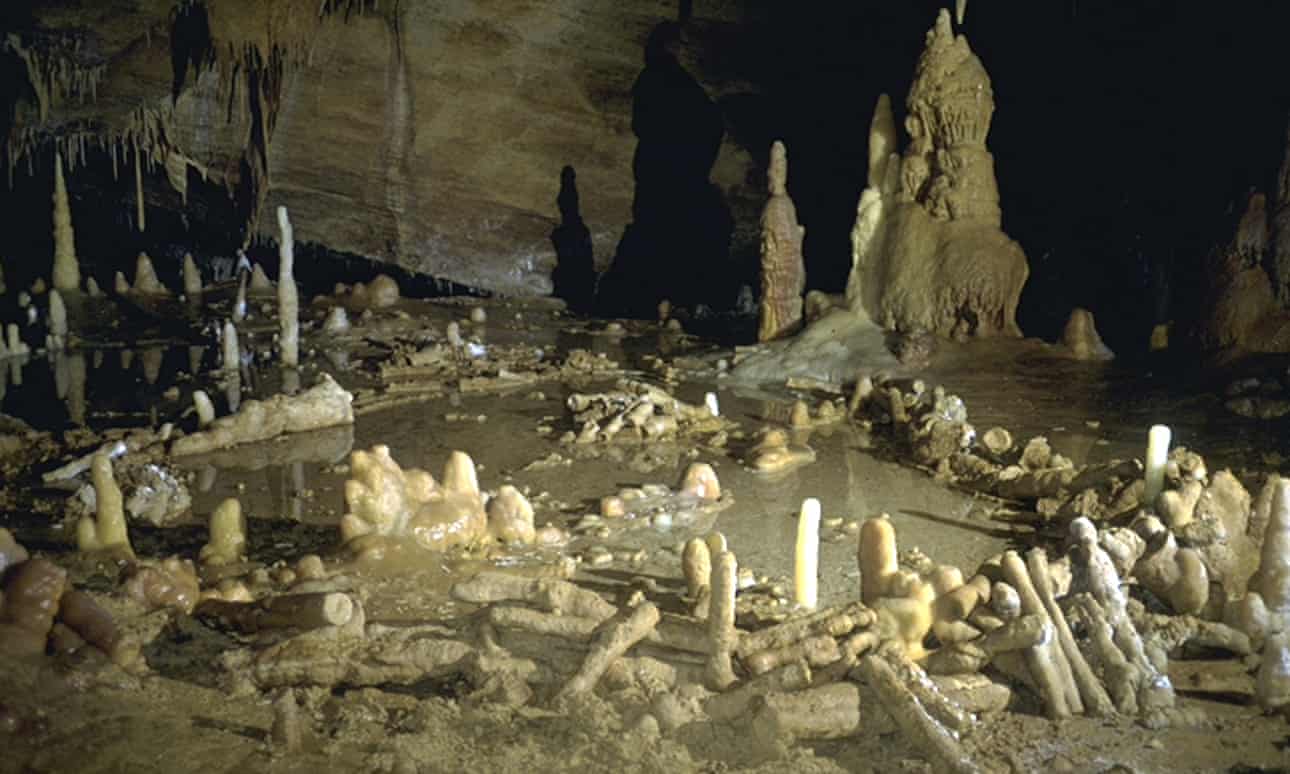
The Bruniquel cave, in southwest France, is believed to be a Neanderthal dwelling 100,000 years before humans in Europe. Stalagmites in the cave may have been arranged as walls, and possibly as a fireplace. Charred bone found in the walls date to 175,000 years ago.
This cave is apparently fairly deep. Cross reference this with deep cave fires and asphyxiation research.
- Article: https://www.theguardian.com/science/2016/may/25/neanderthals-built-mysterious-cave-structures-175000-years-ago
- Related journal article: http://nature.com/articles/doi:10.1038/nature18291
Is it possible that such a place was used as a memory palace? Being secluded away and the play of fire inside would certainly fit some of Lynne Kelly's criteria from Knowledge and Power in Prehistoric Societies. More evidence would be needed however.